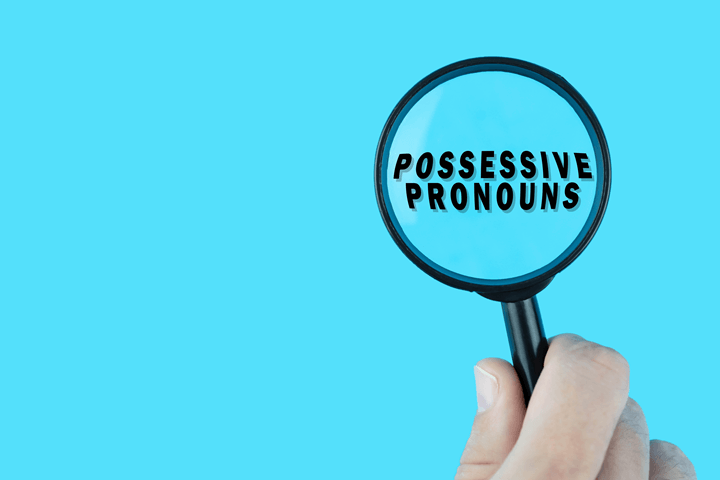The primary Arabic Possessive Pronouns Function is to indicate possession (who owns what). To clarify this concept, the key takeaway for any learner is that possessive pronouns arabic are suffixes (ضَمَائِر الْمُلْكِيَّة – ḍamā’ir al-milkiyyah) that join directly to the end of the noun.
| English Example | Arabic Noun | Possessive Suffix | Combined Word (Translation) |
|---|---|---|---|
| My book | كِتَاب (kitāb) | ـي (-ī) | كِتَابِي (kitābī – My book) |
| Your pen (m.) | قَلَم (qalam) | ـكَ (-ka) | قَلَمُكَ (qalamuka – Your pen) |
| Their car (pl.) | سَيَّارَة (sayyārah) | ـهُمْ (-hum) | سَيَّارَتُهُمْ (sayyāratuhum – Their car) |
Characteristics of Arabic Possessive Pronouns: Gender and Number
Arabic possessive pronouns are unique because they distinguish between the gender, number (singular, dual, plural), and person (first, second, third) of the owner. Consequently, you must choose the right suffix based on who owns the object and who you are talking to.
The Full Arabic Possessive Pronouns Chart
Here is the complete list of suffixes used as possessive pronouns in arabic (using the example noun: كِتَاب / kitāb – book).
| Owner (Person) | Pronoun Suffix | Example | English Meaning |
|---|---|---|---|
| Singular: I | ـي (-ī) | كِتَابِي | My book |
| Singular: You (m.) | ـكَ (-ka) | كِتَابُكَ | Your book (m.) |
| Singular: You (f.) | ـكِ (-ki) | كِتَابُكِ | Your book (f.) |
| Singular: He | ـهُ (-hu) | كِتَابُهُ | His book |
| Singular: She | ـهَا (-hā) | كِتَابُهَا | Her book |
| Dual: We / They | |||
| Plural: You (m./mixed) | ـنَا (-nā) | كِتَابُنَا | Our book |
| Plural: You (m./mixed) | ـكُمْ (-kum) | كِتَابُكُمْ | Your book (pl. m.) |
| Plural: You (f.) | ـكُنَّ (-kunna) | كِتَابُكُنَّ | Your book (pl. f.) |
| Plural: They (m./mixed) | ـهُمْ (-hum) | كِتَابُهُمْ | Their book (pl. m.) |
| Plural: They (f.) | ـهُنَّ (-hunna) | كِتَابُهُنَّ | Their book (pl. f.) |
Arabic Possessive Pronouns Usage: Key Rules to Remember
When attaching arabic possessive pronouns to a noun, first, watch out for these important spelling and grammar changes:
The Tā’ Marbūṭah Rule (ـة)
If the noun you are attaching the pronoun to ends in a Tā’ Marbūṭah (ـة), you must “untie” it and change it to an open Tā’ (ت) before adding the suffix.
- Original Noun: مَدْرَسَة (madrasah – school)
- Final Form: مَدْرَسَة + ـي → مَدْرَسَتِي (madrasatī – My school)
The Dual and Sound Plural Rule
Furthermore, when a noun is dual (ends in ـَان / –ān or ـَيْن / –ayn) or a sound masculine plural (ends in ـُونَ / –ūn or ـِينَ / –īn), you must drop the final Nūn (ن) prior to adding the possessive suffix.
- Original Dual Noun: قَلَمَان (qalamān – two pens)
- Final Form: قَلَمَان – ن + ـهُ → قَلَمَاهُ (qalamāhu – His two pens)
Special Cases: Father and Brother
Finally, the words for father (أَب / ab) and brother (أَخ / akh) often take an extra letter (و or ا) in the possessive form, especially in formal Arabic.
- My Father: أَبِي (abī)
- Your Brother (m.): أَخُوكَ (akhūka)
- His Father: أَبُوهُ (abūhu)
Mastering these arabic possessive pronouns will significantly improve your fluency. Focus on the singular forms first, as a result, they are the most common, and then move on to the plurals. Keep practicing!
To continue your journey into the richness of the Arabic language and its cultures, consider using the Kaleela app. It provides comprehensive lessons on Modern Standard Arabic and various dialects, helping you master not just the words but also the traditions behind them.




